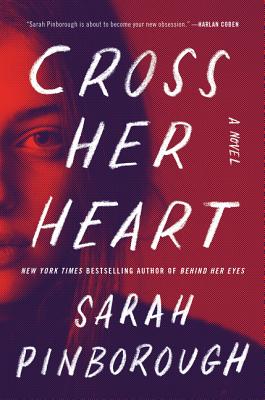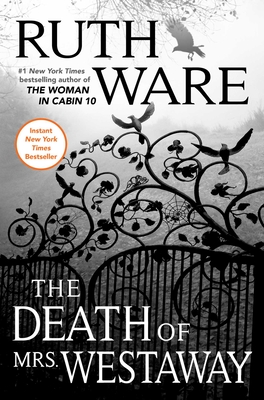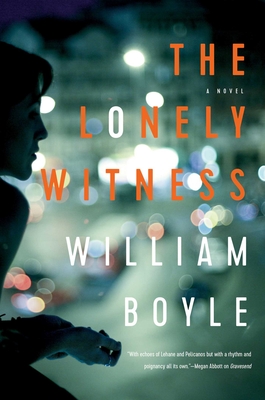– Post by Molly
All month long here at MysteryPeople, BookPeople’s mystery bookstore-within-a-bookstore, we’ve been celebrating International Crime Fiction Month in a variety of ways, including book club picks, internationally-themed Crime Fiction Friday posts, and a film screening of Coup de Torchon, Bertrand Tavernier’s 1981 adaptation of Jim Thompson’s classic noir novel, Pop 1280. We also brought you an interview with Danusia Stok, who has translated Marek Krajewski’s Inspector Mock series, among many others.
As June wraps up, we’ve got another interview for you. Molly asked Ilan Stavans, publisher at Restless Books, about what it’s like to work in international publishing. Mr. Stavans was kind enough to send some answers along. Ilan Stavans has had a variety of literary occupations, including essayist, translator, publisher, and short-story author. He is a prominent cultural commentator and public intellectual who is known for his analysis of American, Mexican and Jewish culture, as well as Latino and Jewish identity.
Mr. Stavans has worked as the publisher for Restless Books for the past two years. According to its mission statement, Restless Books is “an independent publisher for readers and writers in search of new destinations, experiences, and perspectives…committed to bringing out the best of international literature—fiction, journalism, memoirs, poetry, travel writing, illustrated books, and more—that reflects the restlessness of our multiform lives.”
Restless Books works to publish great international literature, and that includes science fiction, crime fiction, nonfiction, and a soon-to-be-launched classics line, Restless Classics. Don Quixote, Restless Classics’ first release, comes out in October in a special 400th anniversary edition. Restless Classics will add two titles to the line each year. The next four classics are Daniel Defoe’s Robinson Crusoe, Mary Shelley’s Frankenstein, Du Bois’s The Souls of Black Folks, and Sor Juana Inés de La Cruz’s Poems and Protest.
Restless Books has also recently reissued one of my favorite detective novels, Four Hands, by Mexican crime novelist, historian, and prominent left-wing activist Paco Ignacio Taibo II. Four Hands is available as an ebook only and you can find it on your Kobo reader, the e-reader that supports independent bookstores. Read the interview below to find out more about Ilan Stavans, Restless Books, and the world of international publishing.

Molly O: What are your thoughts about translating crime fiction, and genre fiction, in particular?
Ilan Stevens: I’m a lover of genre fiction: a voracious reader of detective and crime novels as well as SF. Restless Books has just published two extraordinary Science Fiction novels from Cuba, Agustín de Rojas’s Legend of the Future and Yoss’s A Planet for Rent. As you know, SF often focuses in the dystopian future as a metaphor of the exhausted present and these two novels are an extraordinary opportunity to understand the way the future has been approached in Cuba, a place that for over fifty years has stubbornly proposed an alternative, if equally imperfect and mendacious present.
Genre literature is often criticized as formulaic. But there is great talent in bending the formula, making it elastic, more idiosyncratic. That is the impression one gets when reading genre fiction from across the world. Dashiell Hammett is better appreciated against a background of hard-boiled novels from Pakistan, Bolivia, Israel, and Poland. Thus, translating their hard-boiled books is not only entertainment and a good investment(because genre fiction comes with a built-in-audience), but also culturally enriching.
Restless Books will bring out more SF next year. It has already published Paco Ignacio Taibo II, a master of the hard-boiled in Mexico. And it is preparing more detective novels.
MO: Low numbers of books are translated into English from other languages each year, compared to the number originally published into English. What accounts for the low numbers?
IS: The United States, the world’s superpower and a country made of immigrants, is embarrassingly parochial when it comes to literary translation: according to estimates, only around 3% of new books published annually are translations. This is in contrast with countries like Germany, Italy, France, Spain, Denmark, and Norway, where the percentage can sometimes reach above 50%. The empire is insular, the empire is shallow at its core. We appear to say to others: gives us your poor, your huddled masses, but once they are here, we’ll make sure they don’t look back because we believe we are better than everyone else. What accounts for this pitiful allergy, this meager literary diet? It also has to do with the dominance of English as a global language. And with the way literary markets work, giving others the impression that what gets translated into other languages is proof of success in English. Restless is part of a small but significant group of small publishers of literary translation in America (Archipelago, Other Press, Melville…) eager to bring change.
MO: What do you think are the languages easiest to translate into English? Which are some of the hardest?
IS: Translation is never easy, no matter the language, although it might appear deceivingly simple in some cases. There are books that have been translated into English twenty times (one example is Don Quixote) while thousands of others merit the journey but linger in oblivion. When translating a book that has already been done, it is important to pay tribute, even to draw from one’s predecessors. And when the effort is the first in line, it is crucial to remind the reader that the work at hand comes from elsewhere, that there is an element of foreignness in it that is essential.
MO: When a book has appeal across many different languages and cultures, what, do you think, accounts for this appeal? What themes and genres translate most widely?
IS: Ours in the twenty-first century is a global culture: we want to know what others in remote places of the planet thinking, what they dream. We want to feel that they are our contemporaries, that we live the same present moment in different ways. Global culture, to exist, depends on an emphasis in local elements. Truth is, books that become universal have a way of emphasizing regional aspects. This is a difficult line to walk: how to reach others beyond one’s confine by focusing on what we know best, our own little corner, our home. Audiences are rather open to genres and themes as long as the author, they feel, is at once original and authentic. The translator’s challenge is to preserve that originality and authenticity while also reminding readers that what they have in front of their eyes is foreign.
MO: This one is kind of a broader question – what is it like to work in the world of international publishing?
IS: It is enormously inspiring. As an essayist, translator, and cultural commentator (born in Mexico), for years I complained that American readers have a disturbingly constrained literary diet. A few years back, when I turned fifty, I decided to stop complaining and do something about it. This has taken me from one side of the page (putting words on it) to another (producing that page). I have been able to understand, from within, the laws that govern international literary markets, to appreciate how fashion is shaped, and, hopefully, to look for the courage to make a difference.
 Joe R. Lansdale’s latest, More Better Deals, takes a few cues from one of his influences—James M. Cain—who gave us one of the great templates of noir with his books The Postman Always Rings Twice and Double Indemnity. This time the male is Ed Edwards, a used car salesman in early sixties East Texas, carrying a family secret. When he goes to repossess a Cadillac, he soon finds himself in the arms of purchaser’s wife, Nancy Craig. She would like to see her husband gone and Ed would like to have her, and the husband’s businesses as well, as part of some insurance money to help his sister. Yes, the set up is familiar, but Lansdale uses it to create a novel wild, funny, and completely his own.
Joe R. Lansdale’s latest, More Better Deals, takes a few cues from one of his influences—James M. Cain—who gave us one of the great templates of noir with his books The Postman Always Rings Twice and Double Indemnity. This time the male is Ed Edwards, a used car salesman in early sixties East Texas, carrying a family secret. When he goes to repossess a Cadillac, he soon finds himself in the arms of purchaser’s wife, Nancy Craig. She would like to see her husband gone and Ed would like to have her, and the husband’s businesses as well, as part of some insurance money to help his sister. Yes, the set up is familiar, but Lansdale uses it to create a novel wild, funny, and completely his own.



 Scott Montgomery: Firewatching is a very unique police thriller and very character driven. Which came first, DS Adam Tyler or his adversary?
Scott Montgomery: Firewatching is a very unique police thriller and very character driven. Which came first, DS Adam Tyler or his adversary?
 Amid best selling authors like Gillian Flynn working with unreliable narrators I find myself wondering, when reading new books with female protagonists, if THIS is an character I can rely on. And this one avoided the clichés, the predictable twists of many other authors and instead provided a completely original book that will keep you reading all night.
Amid best selling authors like Gillian Flynn working with unreliable narrators I find myself wondering, when reading new books with female protagonists, if THIS is an character I can rely on. And this one avoided the clichés, the predictable twists of many other authors and instead provided a completely original book that will keep you reading all night.  Ware previously wrote three excellent novels:
Ware previously wrote three excellent novels:  SB: What do you think of those who compare you to Agatha Christie, as both of you not only are famous for twists but also for putting characters into situations that can lead to paranoia and violence?
SB: What do you think of those who compare you to Agatha Christie, as both of you not only are famous for twists but also for putting characters into situations that can lead to paranoia and violence? Bill was kind enough to let us ask him some questions about the book, it’s location, and influences.
Bill was kind enough to let us ask him some questions about the book, it’s location, and influences. MPS: You dig into that noir concept of the past coming back in a unique way. What did you want to explore with that concept?
MPS: You dig into that noir concept of the past coming back in a unique way. What did you want to explore with that concept?










